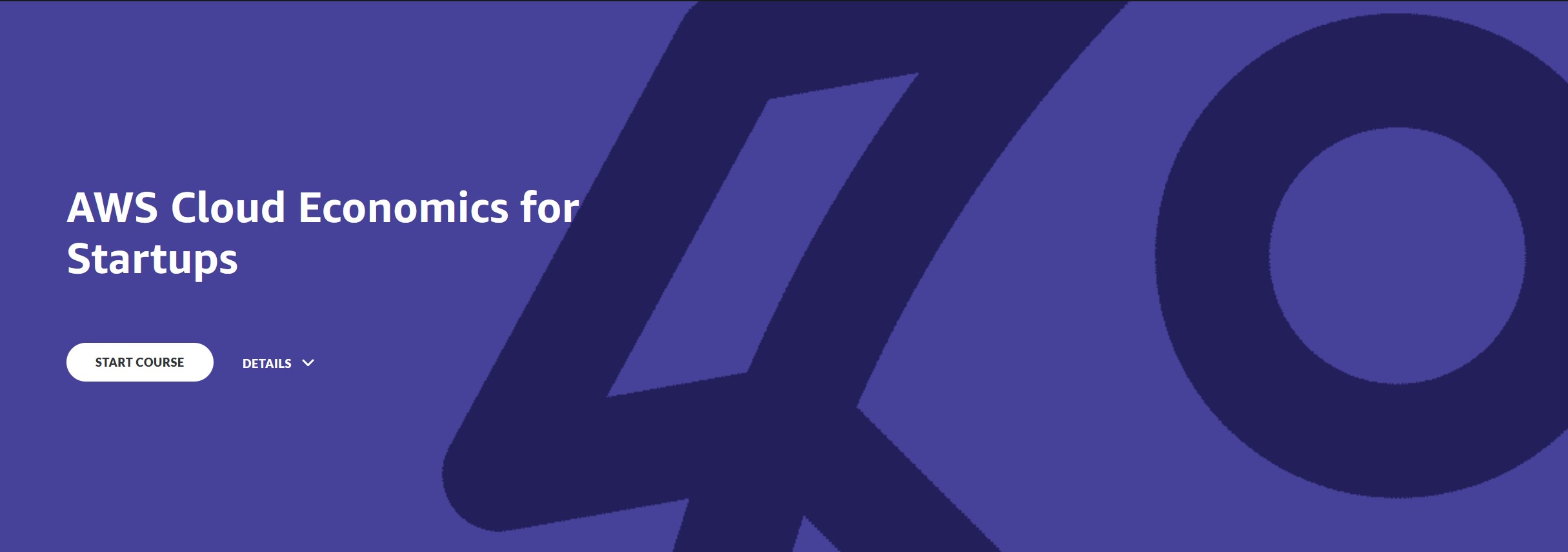AWS Startups Blog
Learn to optimize your cloud spend with the new, free AWS Cloud Economics for Startups series
The AWS Training and Certification team is offering a new, free video series: AWS Cloud Economics for Startups.
Throughout the 15 lessons, you’ll learn from use cases of other real-world AWS startup customers that will help inform and guide your own particular journey.
What will I learn?
- Objective: You’ll learn how to work with AWS from the earliest stages of your startup through maturity while optimizing cloud spend on a pay-as-you-go shared responsibility model.
- Target audience: Anyone interested in learning more about the value proposition of AWS Cloud products and services and how to get started on their cloud journey.
- How long will it take to complete: 1 hour
What’s on offer in this course
Successful Startups in the Cloud
In this lesson, we’ll discuss how the flexibility of the AWS Cloud can improve your business’s viability and how to boost speed, save costs, and improve agility.
Introduction to Cloud Value Framework
This lesson introduces the four key pillars of the AWS Cloud Value Framework:
- Cost Savings – Run your infrastructure affordably using cloud-based technology services.
- Staff Productivity – Boost efficiency with automation and the cloud.
- In the use case, we’ll show you how Reddit experienced hyperscale growth, and how AWS helped them migrate to a relational database service to reduce the burden on the staff.
- Operational Resilience – Avoid and recover from outages.
- For our example, we’ll show you how cryptocurrency platform Coinbase reduced its risk profile. “Our core tenets are security, scalability, and availability,” explains Director Rob Witoff. “Just as a traditional bank would heavily guard its customers’ assets inside a physical bank vault, we take the same or greater precautions with our servers.”
- Business Agility – Harness the AWS Cloud to stay competitive while adapting to customer needs and market changes.
- Because costs tend to increase along with the service footprint, MoneySmart, the largest financial portal in the Southeast Asia region, used AWS Cost Explorer, AWS Trusted Advisor, and other tools to optimize their Amazon Elastic Cloud Compute (EC2) instances (virtual computers on which to run applications).
 Rightsize Your Services
Rightsize Your Services
This lesson shows you how to match EC2 instance types and sizes to your workload and eliminate any you don’t use, an ongoing process as your company’s needs change.
Make Your Business Elastic
In this lesson, we’ll discuss how to use Amazon EC2 to scale up and down, acquiring and releasing resources automatically—using (and paying for) just what you need.
For example, MoneySmart continued their cost savings by launching a non-working-hours policy that scaled down EC2 instances when the office was closed.
Select the Right Pricing Model
AWS pricing is like that of utilities—you only pay for what you use.
Select the Right Pricing Model shows how to choose between Amazon EC2 On-Demand Instances, savings plans, Spot Instances, and Reserved Instances.
In the use case, you’ll learn how MoneySmart crafted a mixed pool of Spot Instances for their Amazon Elastic Container Service (Amazon ECS) and Amazon Elastic Kubernetes Service (Amazon EKS) clusters, for example, while providing container-driven auto scaling and resource rightsizing.
Match Storage Type to Your Need
Analyzing access and usage patterns, Match Storage Type to Your Need describes ways to build multiple storage solutions into a well-architected system.
Design Infrastructure with Budget in Mind
New startups tend to focus on getting to market quickly. However, as a business starts to scale, controlling costs becomes crucial. The last thing anyone wants is to see hard-earned customer acquisition eaten up by unnecessary operating expenses.
Design Infrastructure with Budget in Mind provides tools such as the AWS Pricing Calculator to optimize cloud spend.
Ready to get started?
This course includes presentations, use cases, and helpful resources. Learn more about AWS Cloud Economics for Startups or sign up today!
